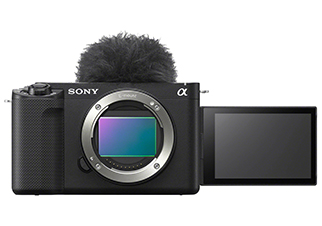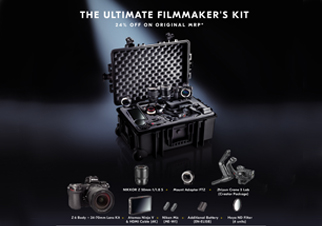Dabboo
Ratnani is a name that is synonymous with celebrity and fashion
photography. Celebrities swear by him and so do designers and
fashionistas. His annual calendars are a thing that everyone waits
for through the year and the who‘s who of Bollywood feature in
them! We spoke to the brilliant and charismatic Dabboo regarding his
journey of 25 years in the industry. Excerpts:
What
do you think are the key learning that you have taken from your
career over the years? You will complete 25 years in the industry
this year. Are you thinking of something special to celebrate it in
terms of photography/project etc?
Yes, this is my 25th
year in the industry and it is going great. It has been an amazing
run. I am still enjoying as much as I used to. I still take shoots
like as if it is my first day at work. I feel that fire, the energy.
I enjoy it as much as I used to in day one of my photography. So even
when I shoot today, I always think ‘let’s try something new today.
Let’s try something different, let’s try a new angle, maybe a new
lens, maybe a new camera, a new lighting accessory, something that
keeps me excited’. I feel that it has kept me going, something that
keeps me really fired up with regards to my shoot, my profession.
One
thing that I stress upon is that nowadays people have better access
to equipment than what we had but that will not make you a brilliant
photographer. It is not only about the equipment, it has a lot to do
with the aesthetics of a photographer, it has a lot to do with how a
photographer frames the shot, how he sees the model, how he is going
to style the model. People are so worried about equipment these days
– whether it should be a mirrorless or a DSLR, or should it be a
medium format and so on. It has a lot to do with the vision of the
photographer, the concept, the whole feel – everything is created
by the photographer.

Having
been in this field for so many years do you feel exhausted sometimes?
How do you motivate yourself at such times?
It
has been an amazing 25 years. I wouldn’t say I get exhausted, but I
think travelling, watching movies or listening to music helps me to
create and think differently every time. So, I feel that you need to
inspire yourself. You need to find an inspiration, whatever that
inspiration may be! It is very relative and may be very different for
every person. I love watching movies, videos on the internet, I love
watching TV shows. I get inspiration from everything and I think one
must draw inspiration from wherever they can. So even something like
walking down the street or at the gym on the treadmill – wherever I
get some me-time, I am constantly thinking of concepts. So you should
always be open. I think photography is pretty much in Manisha and my
blood stream now! Our mind is always working around ‘Okay what can we
do next for the shoot’. Every place we travel to, we are always
looking- ‘Oh, we must come back for a shoot here’. It doesn’t exhaust
me but if it does exhaust anyone, I think you need to find your
outlet and inspiration.

What
really goes on behind all the glitz when it comes to shooting and
executing a shoot with a celebrity since most people feel it might be
very glamorous?
Most
people feel that shooting celebrities or a model or a fashion shoot,
or a location shoot or an outdoor campaign, people feel that ‘Oh,
wow! You travel to these exotic locations, you visit these amazing
palaces, wherever you are shooting, you are really enjoying your
life. It is so cool that you are hanging out with models, with
actors.‘
But people do not realise the amount of stress and
hard work that goes into it! Right from planning the whole thing, the
whole responsibility, the pressures that we go through at a shoot –
when it is outdoor – it could be the weather, it could be the sun,
taking care of the whole crew, there is so much that goes into every
shoot. Specially with celebrities, time management is very important.
Photo shoots are just one of the things they do, they have so much
more that they do in a day. You have to capitalise the maximum amount
of time you get from them. There are times when we are time bound,
there is pressure, there is so much going on. One has to be really
really quick specially with shooting fashion and celebrities – you
do not want to miss the moment.

In
the last 2 years what is that one memorable shot (captured/viewed)
that has really moved you?
I
shot a photograph of Tiger Shroff hanging from a crane at a
construction site which is one of the most memorable shots that I
have taken in the last two years. The whole feel, the mood, the
lighting, the impact of the shot and the way his attitude is, his
body language, everything is completely beautiful in that shot. The
response that I got when I published it in my calendar as well was
incredible, because everybody, usually on a desk calendar, prefers to
see more of close-ups and mid shots where you can see the celebrity
clearly in front of you and in this case it was a full length shot
and he isn’t even looking into the camera and although it is a full
length shot, you can easily see it is Tiger Shroff. It was my first
photoshoot with him ever, and he was a real sport!

Read
the full interview in Asian Photography Magazine’s August Issue.










